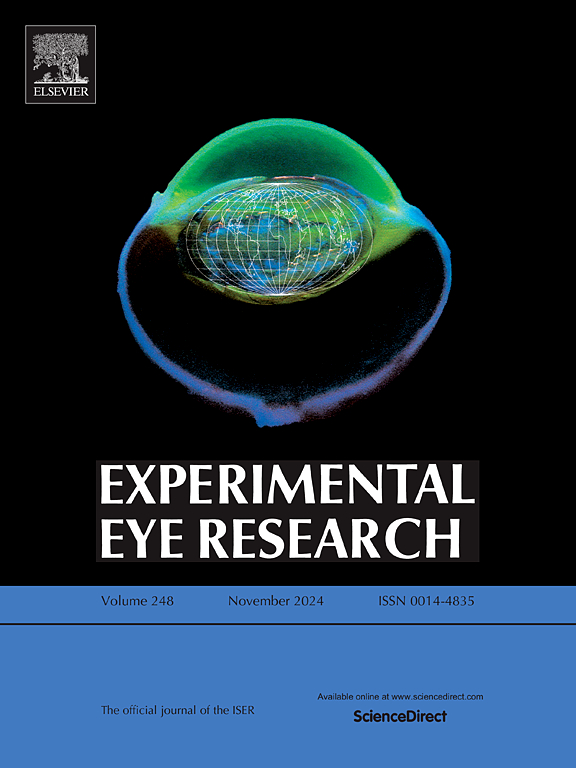多组学分析揭示睑板腺衰老的脂质代谢特征和调控网络。
IF 3
2区 医学
Q1 OPHTHALMOLOGY
引用次数: 0
摘要
衰老是眼表疾病的重要危险因素,如睑板腺功能障碍(MGD),它会损害泪膜的稳定性,导致不适、视力障碍和眼结构损伤。本研究旨在阐明年龄相关的脂质代谢变化及其调控网络,为早期发病机制提供见解,并为预防年龄驱动的大鼠病理发现潜在的分子靶点。我们使用多组学方法、转录组学分析和脂质组学分析了幼年(2月龄)和老年(12月龄)C57BL/6小鼠的mg。我们的研究结果揭示了老年mg中脂质组成的变化,特别是磷脂水平降低和甘油三酯(TG)水平升高。脂质代谢的差异表达基因(DEGs)也被发现,包括甘油脂、甘油磷脂和鞘脂代谢,形成了一个复杂的脂质代谢调控网络。通过qPCR验证了一些关键的DEGs,证实了衰老mg中Akr1b8(甘油脂代谢)上调,Mboat2(甘油磷脂代谢)、Degs2和Sptlc3(鞘脂代谢)下调。这些发现强调了脂质代谢失调是与年龄相关的MGD的关键因素,为未来的研究提供了潜在的目标,以减轻这种情况并保持眼部健康。本文章由计算机程序翻译,如有差异,请以英文原文为准。
Multi-omics analysis reveals lipid metabolism profiles and regulatory networks in meibomian glands aging
Aging is a significant risk factor for ocular surface diseases like meibomian gland dysfunction (MGD), which compromises tear film stability, leading to discomforts, visual impairment, and ocular structural damage. This study aims to elucidate the age-related changes in lipid metabolism and the regulation networks, providing insights into early pathogenic mechanisms and identifying potential molecular targets for preventing age-driven pathology in the MGs. We analyzed MGs from young (2 months) and aged (12 months) C57BL/6 mice using a multi-omics approach, transcriptomic analysis and lipidomic analysis. Our findings revealed shifts in lipid composition in aged MGs, especially with reduced phospholipid levels and elevated triglyceride (TG) levels. Differentially expressed genes (DEGs) in lipid metabolism were also identified, including glycerolipid, glycerophospholipid, and sphingolipid metabolism, forming a complex regulatory network of lipid metabolism. Some critical DEGs were validated by qPCR, confirming the upregulation of Akr1b8 (glycerolipid metabolism) and the downregulation of Mboat2 (glycerophospholipid metabolism), Degs2, and Sptlc3 (sphingolipid metabolism) in aged MGs. These findings highlighted lipid metabolism dysregulation as a key factor in age-related MGD, offering potential targets for future research to mitigate this condition and preserve ocular health.
求助全文
通过发布文献求助,成功后即可免费获取论文全文。
去求助
来源期刊

Experimental eye research
医学-眼科学
CiteScore
6.80
自引率
5.90%
发文量
323
审稿时长
66 days
期刊介绍:
The primary goal of Experimental Eye Research is to publish original research papers on all aspects of experimental biology of the eye and ocular tissues that seek to define the mechanisms of normal function and/or disease. Studies of ocular tissues that encompass the disciplines of cell biology, developmental biology, genetics, molecular biology, physiology, biochemistry, biophysics, immunology or microbiology are most welcomed. Manuscripts that are purely clinical or in a surgical area of ophthalmology are not appropriate for submission to Experimental Eye Research and if received will be returned without review.
 求助内容:
求助内容: 应助结果提醒方式:
应助结果提醒方式:


